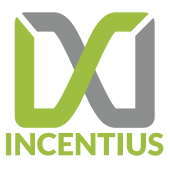A low risk approach to design & develop enterprise web apps Sujeet Pillai January 27, 2017
Thick Prototype Strategy
The core aspect of this strategy is to enable the enterprise business owner to commission a ‘thick’ prototype for new ideas at a relatively lower cost and quicker turn-around time. This is basically a prototype web frontend that encompasses almost all front-end functionality. It lays out in detail the frontend design and workflow and implements most functionality (or mimics the functionality) in full. This thick prototype will also mock-up sample reports, visualizations and dashboards at this stage. The focus is on mimicking the front-end look and feel and workflow functionality.
A new discovery process
The primary change in such a strategy is that the discovery process is now embedded with the prototype creation stage. The thick prototype is iterated based on client inputs; hence, requirements and functionality are captured in the live visual form rather than in functional requirements documentation. If the client is capable of providing a consistent dataset of mock data to populate this prototype, it makes this stage even more effective. This aspect helps thick prototypes also mimic backend functionality to certain limits as well. A large number of enterprise apps are essentially workflows with a reporting/visualization layer when they’re broken down to the bare bones. This is why the thick prototype is quite effective as a discovery process since workflow interaction points are beautifully explained using visual prototypes rather than extensive textual documentation and screenshots. The dynamic prototype also allows for capturing the exact workflow functionality better than the static screenshot or extensive textual requirements. Business users/owners can understand information flow, visual element positioning and logical operations early on in the app development stage. Usually, the business users/owners don’t get a view into how the application looks and feels until the UAT (User Acceptance Testing) stage. The visual approach to discovery in the Thick Prototype case also facilitates better user experience-based design.

Better funding and reduced risk
The thick prototype concept also enables quicker buy-in from senior stakeholders and allows for rapid deployment of resources and funding for such enterprise application projects. Business leaders are generally more willing to fund projects that they can visualize. These thick prototypes can also help create end-user excitement and hence advocacy for the application. Gaining end-user buy-in early, along with incorporating any relevant feedback from them, also works as a conduit to better funding for such enterprise apps. In addition to better funding, the thick prototype concept also reduces the risk in such applications. The thick prototype is inexpensive to build in comparison to even a full discovery stage in the traditional approach. The thick prototype would only typically run between 15-25% of the total estimated project cost. This prototype is also sufficient to demo to relevant stakeholders and gain buy-in from them. A GO/NO-GO decision point is included after the thick prototype is delivered. As a result, if stakeholders are not agreed to the proposed solution, the total sunk cost of the project is fractional and not substantial. Since the thick prototype discovery process is iterative and open to suggestions and changes early, this substantially reduces the risk of rework during the build phase, reducing the risk of scope creep and allowing for better control over project costs.
Scaling during build
If the right approach and technology are used in building this thick prototype, it can be appropriately scaled during the build phase to create the full application. Such an approach reduces design anxiety amongst the project owners since the final system will look and work pretty much exactly how the prototype did. The project owners, end-users and sponsors relate a lot better to the final application delivered than in the traditional approach. A supplementary benefit is that training documentation/videos/resources can be built reliably off of the thick prototype which is available early and can be pre-gamed to the user base before the actual launch of the full application. This helps in creating awareness about the solution up-front with the help of different support avenues and allows the user base to hit the ground running in terms of the usability of the application during the launch phase.
Spur innovation amongst enterprise apps.
The low financial risk involved in this thick prototype concept can lead to spurring innovation in the enterprise application space. A larger number of business owners can try out their ideas without extensive budget allocations. Such innovation will lead to the next big idea in enterprise management that would create greater value for shareholders, efficiency amongst employees and transparency for the upper management.
Case Study
A client recently approached us to create a dashboard to supply their field reps with the ability to track sales performance. However, they were very particular that the dashboard should be based on modern design concepts and intuitive and easy for the field reps to follow. Our suggestion was to adopt the thick prototype paradigm for the project. Incentius created a prototype frontend for this dashboard with UI/UX elements mimicking how it would perform in production with mock data. The client could visualize the front end and even present it to some key opinion leaders in the field and get feedback before the project was commissioned completely. This also helped the field leaders provide a list of changes they would like to see. Incentius iterated on the prototype until all stakeholders were satisfied and then scaled the same prototype to the full application. This approach was critical to the client having complete control over exactly the product they were receiving and made the launch of the dashboard a success. The approach was so successful that the client requested for an extension of this platform to add new feature sets and wants to first look at a thick prototype for these additional requests before moving to the full build. This paradigm has become the standard operating procedure for this engagement.
Incentius pioneered this concept through trial and error to get the technology, build approach and project management just right. We have successfully created several such thick prototypes and scaled them to full applications as well. Drop us a note if you would like your business owners to spur game-changing innovation in your organization while being exposed to lower risk.
What do you think of our Thick Prototype paradigm? Please feel free to let us know in the comments.


